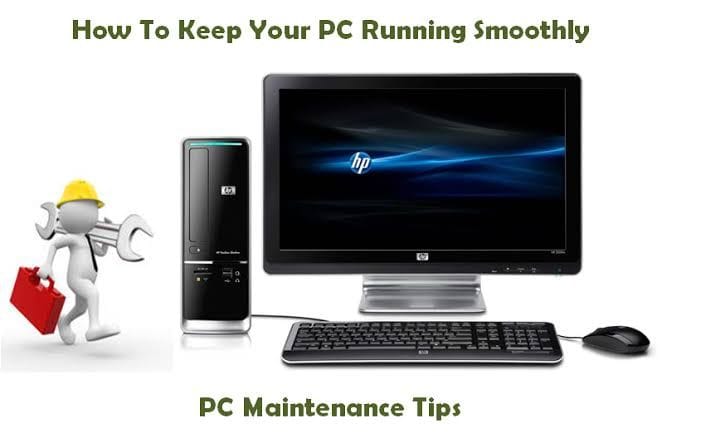Your laptop is an essential tool, whether for work, school, or entertainment, and keeping it in good working order is crucial for ensuring it lasts as long as possible. Regular maintenance can prevent issues such as slow performance, overheating, or even system crashes. By following a few simple tips, you can keep your laptop running smoothly and extend its lifespan. Here are some practical tips to maintain your laptop’s performance, inside and out.
1. Keep Your Laptop Clean
Dirt, dust, and grime can easily accumulate on your laptop, especially around the keyboard, screen, and vents. Regular cleaning is essential to prevent dust from clogging vents, which can cause your laptop to overheat and slow down.
- Tip: Use a microfiber cloth to clean the screen and keyboard. For hard-to-reach areas, like the spaces between keys, you can use a can of compressed air to blow out dust and debris. Avoid using harsh chemicals that could damage the surface or internal components.
- For Vents: Clean out the air vents periodically to prevent dust buildup that can block airflow. Overheating can lead to slower performance and even hardware damage.
2. Update Your Software Regularly
Keeping your operating system, software, and drivers updated is vital for maintaining your laptop’s performance and security. Updates often include bug fixes, security patches, and performance improvements that help your laptop run efficiently.
- Tip: Set your laptop to install updates automatically, or check for updates regularly in your system settings. Ensure your antivirus software is up to date as well to protect against malware and other security threats.
3. Manage Startup Programs
When too many programs automatically start up when you boot your laptop, it can slow down your device significantly. Disabling unnecessary startup programs can speed up your laptop and reduce boot time.
- Tip: To manage startup programs on Windows, go to Task Manager > Startup, and disable any unnecessary programs. On a Mac, navigate to System Preferences > Users & Groups > Login Items, and remove any unneeded items from the list.
4. Optimize Storage Space
Running low on storage can significantly slow down your laptop’s performance. Clearing out unneeded files, uninstalling unused applications, and organizing your data can free up valuable space and keep your laptop running smoothly.
- Tip: Regularly delete temporary files, browser caches, and other unnecessary data. For Windows users, you can use the Disk Cleanup tool, while Mac users can use the “Manage Storage” feature in the system settings. Consider moving large files, like photos or videos, to an external hard drive or cloud storage to save space.
5. Protect Your Laptop from Malware
Viruses, spyware, and other types of malware can slow down your laptop, cause crashes, and even compromise your personal data. It’s crucial to use antivirus software and practice safe browsing habits to protect your laptop.
- Tip: Install reputable antivirus software and keep it updated. Run regular scans to detect and remove any malware. Avoid clicking on suspicious links, downloading files from untrustworthy sources, or visiting unsecured websites.
6. Monitor Battery Health
Proper battery care is essential to keep your laptop running efficiently and prolong its life. Overcharging, exposure to extreme temperatures, and running the battery too low can all negatively impact its longevity.
- Tip: Avoid letting your battery drain completely on a regular basis. Instead, aim to keep it between 20-80% charged. Additionally, if you are using your laptop plugged in for long periods, remove the battery (if removable) to prevent overheating. Many laptops also have built-in battery health features, so check your device’s settings to monitor battery performance.
7. Keep Your Laptop Cool
Overheating is one of the most common causes of performance issues in laptops. Ensuring proper ventilation and cooling can prevent hardware damage and keep your laptop running efficiently.
- Tip: Always place your laptop on a hard, flat surface when in use, rather than soft surfaces like beds or couches that can block the cooling vents. Consider using a laptop cooling pad or stand to improve airflow.
8. Backup Your Data Regularly
Backing up your data ensures that you won’t lose important files if your laptop crashes, gets infected with malware, or sustains physical damage. Regular backups can save you from costly data recovery services or the frustration of losing valuable files.
- Tip: Use an external hard drive or cloud storage service to back up your data regularly. Most operating systems also offer automatic backup options. For Windows, use the “Backup and Restore” feature, and for Mac users, the “Time Machine” tool is an excellent option.
9. Uninstall Unused Programs
Over time, we tend to accumulate programs that we no longer use. These applications take up valuable space and can slow down your laptop’s performance. Regularly reviewing and removing unused programs is essential for optimizing your device.
- Tip: Go through your installed programs and uninstall any that you no longer use. On Windows, go to Control Panel > Programs > Uninstall a Program. On a Mac, drag unwanted applications to the Trash or use a third-party uninstaller tool for a more thorough cleanup.
10. Defragment Your Hard Drive (HDD Users Only)
If you use a laptop with a traditional hard disk drive (HDD), defragmenting the drive can help improve performance by organizing files more efficiently. Defragmentation isn’t necessary for solid-state drives (SSD), which automatically manage data more efficiently.
- Tip: Windows includes a built-in defragmentation tool. Go to the Start menu, search for “Defragment and Optimize Drives,” and follow the prompts. Mac users don’t need to defragment their drives, as macOS handles this process automatically.
11. Adjust Power Settings for Efficiency
Your laptop’s power settings can significantly impact its performance. Adjusting power settings to optimize energy use can prolong battery life and reduce wear on your hardware.
- Tip: For Windows users, go to Control Panel > Power Options and select a balanced or power-saving plan. On Mac, go to System Preferences > Energy Saver and customize your settings to match your usage.
12. Upgrade Hardware When Needed
If your laptop is older or struggling to keep up with new software, upgrading certain hardware components can help improve performance. Common upgrades include increasing RAM or replacing an old hard drive with a faster solid-state drive (SSD).
- Tip: If your laptop is running slow despite regular maintenance, consider upgrading your RAM or switching to an SSD. These upgrades can make a significant difference in performance, especially if you’re running resource-intensive programs.
Conclusion
Regular maintenance is key to keeping your laptop running smoothly, ensuring it performs at its best for years to come. By following these tips—cleaning your device, managing storage, protecting against malware, and monitoring battery health—you can avoid common issues and extend the life of your laptop. With a little effort and attention, you can keep your laptop functioning efficiently and avoid the need for costly repairs or replacements.



